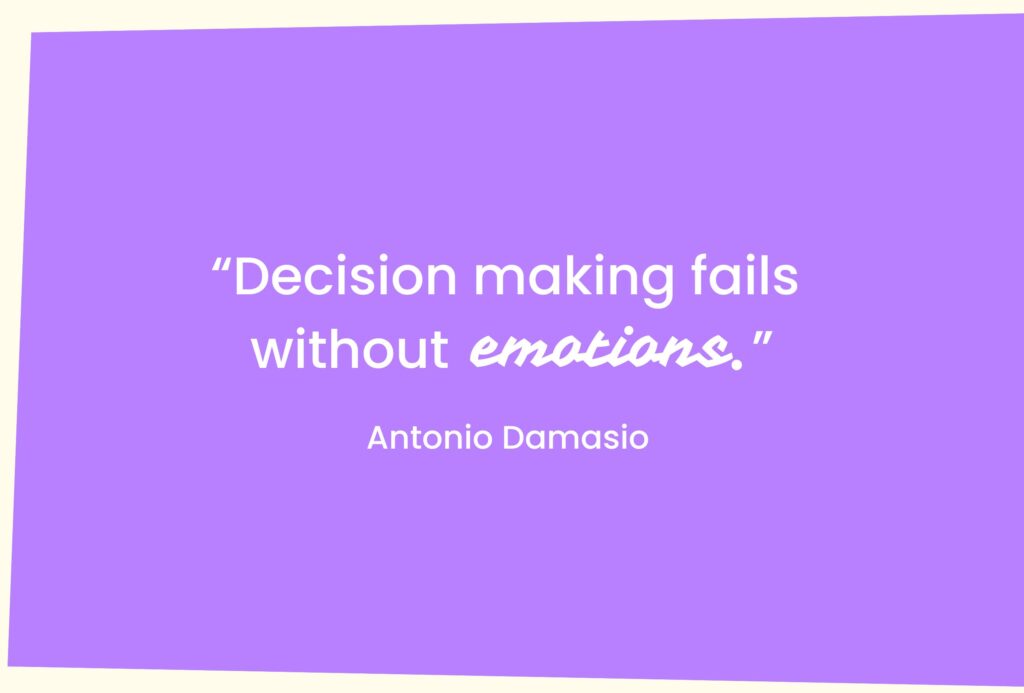Engagement Scores Are Useless Without Understanding Emotions
Engagement Scores Do Not Tell the Full Story
An engagement survey gives you a score. The score shows you how engaged your workforce is at a point in time. The issue is that scores only tell you what, not why. Without knowing why, you cannot act effectively.
The Emotion Gap
Research shows that emotions drive behaviour.
- Antonio Damasio proved that decision making fails without emotions (Damasio, A. R. (1999). The Feeling of What Happens: Body and Emotion in the Making of Consciousness. New York: Harcourt Brace).
- NLP explains how colleagues use emotional language to frame meaning (O’Connor, J., & Seymour, J. (1990). Introducing NLP: Psychological Skills for Understanding and Influencing People. London: Thorsons).
- Bandura showed how emotions spread across groups and how self-efficacy rises or falls based on how people feel (Bandura, A. (1997). Self-Efficacy: The Exercise of Control. New York: Freeman).
If you only run an engagement survey and track the headline score (Engagement Index), you miss what is driving behaviour. Knowing that engagement is 72% does not explain anything. Instead, knowing that 55% of your employees are stressed and the reason(s) why is far more insightful and actionable. Or knowing that 33% of your team feel proud, and why, tells you what to amplify. This is why we focus on Emotional Insights.

What We See With Clients
Real examples show how Emotional Insights transform survey data into meaningful action:
- A transport client with over 10,000 colleagues saw engagement appear steady, but anxiety rise due to constant change without communication.
- A construction client operating across multiple UK sites found happiness was high, but frustration grew when insufficient systems and processes hindered their ability to do their best work.
- A global FMCG client with a workforce of 25,000 saw commitment remain high, but trust drop when colleagues felt promotions were unfair.
Why Data Alone Does Not Stick
Survey scores are easy to forget. Leaders glance at the dashboard and move on. Stories from colleagues and the emotions behind them stick.
When a colleague says, "I enjoy my work, but I feel excluded from decisions," leaders remember and act. This is why emotion data matters. It turns survey numbers into clear stories and clear actions. It feels more human.

Emotions as Early Signals
Emotions shift before engagement scores move. Scores can dip after damage is done. Emotions such as unappreciated and stressed often rise first, then the Engagement Index lags behind. When leaders see these signals, they can intervene before turnover or disengagement becomes costly.
Emotions Differ Across Groups
Emotions vary across workforce groups. Managers may feel happy and committed, while frontline colleagues feel anxious or frustrated. Office teams may feel excited about strategy, while operational teams feel left behind. Breaking down emotions is critical to understand the true picture.
Why This Matters
When you understand emotions, you improve outcomes:
- Leaders focus on the right issues.
- Conversations move from numbers to real colleague experiences.
- Trust grows across the workforce.
- Retention, innovation, safety and customer results improve.
How Inpulse Helps
The Inpulse platform makes this practical. You can:
- Analyse emotions by team, role or demographic.
- Identify dominant emotions shaping engagement.
- Track trends over time to act before issues escalate.
An engagement survey alone cannot give you this. Emotions explain what is happening and what you should do
From Measurement to Action
To create impact, leaders must go beyond measurement. You need to know:
- What is driving your engagement survey score.
- What action to take.
The Inpulse Insight Report gives you clear actions and direction. Our bespoke Engagement Maturity Model shows where you are today and how to move forward.

Next Steps
Next time you look at your engagement survey score, ask yourself: Do you know what is behind it, and do you know what to do with it?
Book a demo to see how Inpulse helps you move beyond the survey. Download a sample Insight Report. Explore the Engagement Maturity Model.
To learn more about emotion trends read our free report: Emotional Undercurrents 2025
Watch this space for our upcoming Whitepaper on Emotions White Paper



